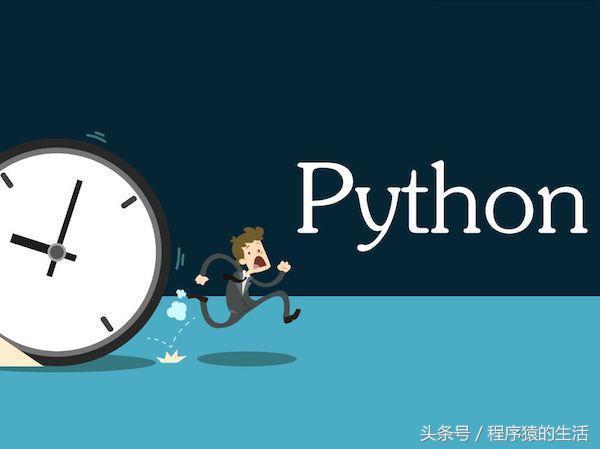10 recommended courses on Python regularity
This article mainly introduces the method of Python regular capture of NetEase news, combined with examples, a more detailed analysis of the implementation skills and precautions related to Python's use of regular rules to capture NetEase news. Friends in need can refer to this article. The example describes how Python regularly captures NetEase news. I share it with you for your reference. The details are as follows: I wrote some crawlers to crawl NetEase news, and found that the source code of the webpage did not match the comments on the webpage. Therefore, I used a packet capture tool to hide the comments. Address (each browser has its own packet capture tool, which can be used to analyze the website). If you observe carefully, you will find that there is a special one, then this is what you want. Then open the link to find the relevant address. Comment content. (The picture below shows the content of the first page) Next is the code (also rewritten according to the master's modification). #coding=utf-8 import urllib2 import re import json import time class WY():1.
1. Recommended articles about NetEase News

##Introduction: This article mainly introduces the method of Python regular grabbing NetEase news, combined with examples, a more detailed analysis of the relevant implementation skills and precautions for using regular rules to capture NetEase news in Python. It is necessary Friends can refer to the example in this article to describe the method of Python regular grabbing of NetEase news. I share it with you for your reference. The details are as follows: I wrote some crawlers to crawl NetEase news, and found that the source code of the webpage did not match the comments on the webpage. Therefore, I used a packet capture tool to hide the comments. Address (each browser has its own packet capture tool,...
2. Recommended 10 articles about non-greedy

Introduction: This article mainly introduces relevant information about the greedy/non-greedy characteristics of Python regular expressions. It is introduced through sample code. It is very detailed and has certain reference value for everyone. Friends who need it can take a look below. I have briefly introduced the basics and capture of Python regular expressions before, so in this article, I will summarize the regular expressions. Greedy/non-greedy characteristics. By default, regular expressions will perform greedy matching. The so-called "greedy" actually selects the longer one among the matching strings of multiple lengths. For example, as follows. ..
##3.Complete Guide to Regular Expressions in Python
 ##Introduction: Regular expression processing of text is like a strong wind sweeping autumn leaves. Most programming languages have built-in support for regular expressions. It is used in scenarios such as form validation, text extraction, and replacement. The following is for everyone. Here comes the python regular expression guide, friends who need it can refer to it
##Introduction: Regular expression processing of text is like a strong wind sweeping autumn leaves. Most programming languages have built-in support for regular expressions. It is used in scenarios such as form validation, text extraction, and replacement. The following is for everyone. Here comes the python regular expression guide, friends who need it can refer to it
4.
More detailed Python regular expression operation guide Introduction: Python has added the re module since version 1.5, which provides Perl-style regular expression patterns through regex. The module provides Emecs-style mode. Emacs-style mode is slightly less readable and less powerful, so try not to use the regex module when writing new code. Of course, you may still find traces of it in old code ##.
Introduction: Python has added the re module since version 1.5, which provides Perl-style regular expression patterns through regex. The module provides Emecs-style mode. Emacs-style mode is slightly less readable and less powerful, so try not to use the regex module when writing new code. Of course, you may still find traces of it in old code ##.
#5. Detailed explanation of Python's regular greedy and non-greedy characteristics
##Introduction: This article mainly introduces the relevant information about the greedy/non-greedy characteristics of Python regular expressions. The article introduces it in detail through example code, which has certain reference value for everyone. Friends who need it can join us below. Let’s take a look. 
Python Capture Regular Expressions

Introduction: What is capture? After using parentheses to specify a subexpression, the text matching this subexpression (that is, the matched content) can be used in expressions or other processes. The following article mainly introduces the capture in Python regular expressions. For relevant information, friends in need can refer to it.
7. Python Basics Regular Expressions

##Introduction: Regular expressions are not part of Python. Regular expressions are a powerful tool for processing strings. They have their own unique syntax and an independent processing engine. They may not be as efficient as str's own method, but they are very powerful. The following article mainly introduces relevant information about the basics of Python regular expressions. Friends in need can refer to it.
8. Share a simple code example of Python regular expression

9.
Python code example for grabbing NetEase news
 # #Introduction: This article mainly introduces the method of Python regular capture of NetEase news, combined with examples, a more detailed analysis of the implementation skills and precautions related to Python's use of regular rules to capture NetEase news. Friends in need can refer to the following
# #Introduction: This article mainly introduces the method of Python regular capture of NetEase news, combined with examples, a more detailed analysis of the implementation skills and precautions related to Python's use of regular rules to capture NetEase news. Friends in need can refer to the following
10.
Seven Python regular expression usage examples Introduction: As a concept, regular expressions are not unique to Python. However, there are still some minor differences in the actual use of regular expressions in Python. This article is a series about Python regular expressions
Introduction: As a concept, regular expressions are not unique to Python. However, there are still some minor differences in the actual use of regular expressions in Python. This article is a series about Python regular expressions
[Related Q&A recommendations]:
Does python support solidified grouping?
About the usage of findall function in python regular expressions?
Regular expression - python regular expression filters out tuples
Regular expression - python regular expression, starting with the specified string
The above is the detailed content of 10 recommended courses on Python regularity. For more information, please follow other related articles on the PHP Chinese website!

Hot AI Tools

Undresser.AI Undress
AI-powered app for creating realistic nude photos

AI Clothes Remover
Online AI tool for removing clothes from photos.

Undress AI Tool
Undress images for free

Clothoff.io
AI clothes remover

Video Face Swap
Swap faces in any video effortlessly with our completely free AI face swap tool!

Hot Article

Hot Tools

Notepad++7.3.1
Easy-to-use and free code editor

SublimeText3 Chinese version
Chinese version, very easy to use

Zend Studio 13.0.1
Powerful PHP integrated development environment

Dreamweaver CS6
Visual web development tools

SublimeText3 Mac version
God-level code editing software (SublimeText3)

Hot Topics
 How to solve the permissions problem encountered when viewing Python version in Linux terminal?
Apr 01, 2025 pm 05:09 PM
How to solve the permissions problem encountered when viewing Python version in Linux terminal?
Apr 01, 2025 pm 05:09 PM
Solution to permission issues when viewing Python version in Linux terminal When you try to view Python version in Linux terminal, enter python...
 How to teach computer novice programming basics in project and problem-driven methods within 10 hours?
Apr 02, 2025 am 07:18 AM
How to teach computer novice programming basics in project and problem-driven methods within 10 hours?
Apr 02, 2025 am 07:18 AM
How to teach computer novice programming basics within 10 hours? If you only have 10 hours to teach computer novice some programming knowledge, what would you choose to teach...
 How to avoid being detected by the browser when using Fiddler Everywhere for man-in-the-middle reading?
Apr 02, 2025 am 07:15 AM
How to avoid being detected by the browser when using Fiddler Everywhere for man-in-the-middle reading?
Apr 02, 2025 am 07:15 AM
How to avoid being detected when using FiddlerEverywhere for man-in-the-middle readings When you use FiddlerEverywhere...
 How to efficiently copy the entire column of one DataFrame into another DataFrame with different structures in Python?
Apr 01, 2025 pm 11:15 PM
How to efficiently copy the entire column of one DataFrame into another DataFrame with different structures in Python?
Apr 01, 2025 pm 11:15 PM
When using Python's pandas library, how to copy whole columns between two DataFrames with different structures is a common problem. Suppose we have two Dats...
 How does Uvicorn continuously listen for HTTP requests without serving_forever()?
Apr 01, 2025 pm 10:51 PM
How does Uvicorn continuously listen for HTTP requests without serving_forever()?
Apr 01, 2025 pm 10:51 PM
How does Uvicorn continuously listen for HTTP requests? Uvicorn is a lightweight web server based on ASGI. One of its core functions is to listen for HTTP requests and proceed...
 How to handle comma-separated list query parameters in FastAPI?
Apr 02, 2025 am 06:51 AM
How to handle comma-separated list query parameters in FastAPI?
Apr 02, 2025 am 06:51 AM
Fastapi ...
 How to get news data bypassing Investing.com's anti-crawler mechanism?
Apr 02, 2025 am 07:03 AM
How to get news data bypassing Investing.com's anti-crawler mechanism?
Apr 02, 2025 am 07:03 AM
Understanding the anti-crawling strategy of Investing.com Many people often try to crawl news data from Investing.com (https://cn.investing.com/news/latest-news)...
 How to solve permission issues when using python --version command in Linux terminal?
Apr 02, 2025 am 06:36 AM
How to solve permission issues when using python --version command in Linux terminal?
Apr 02, 2025 am 06:36 AM
Using python in Linux terminal...






